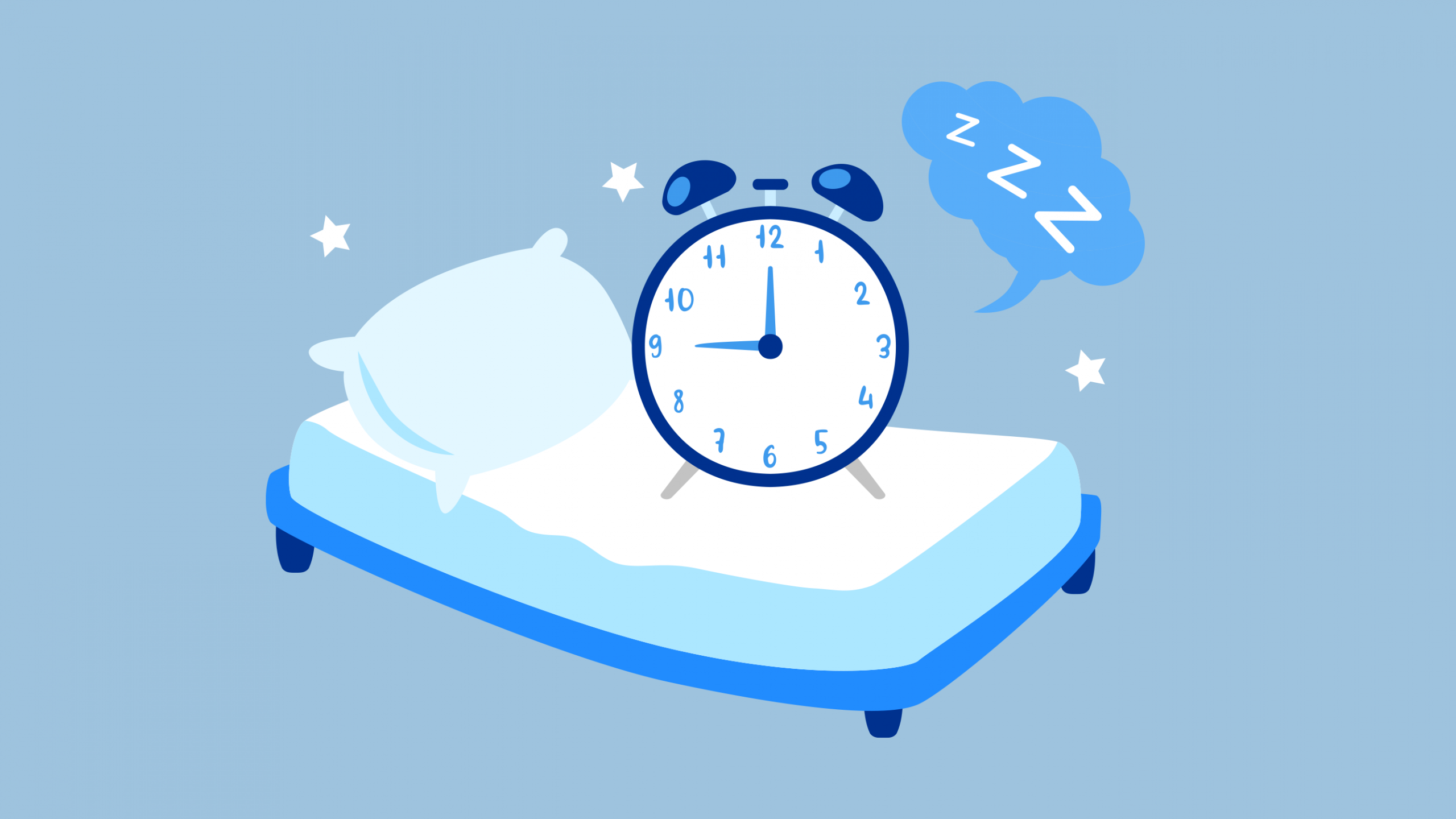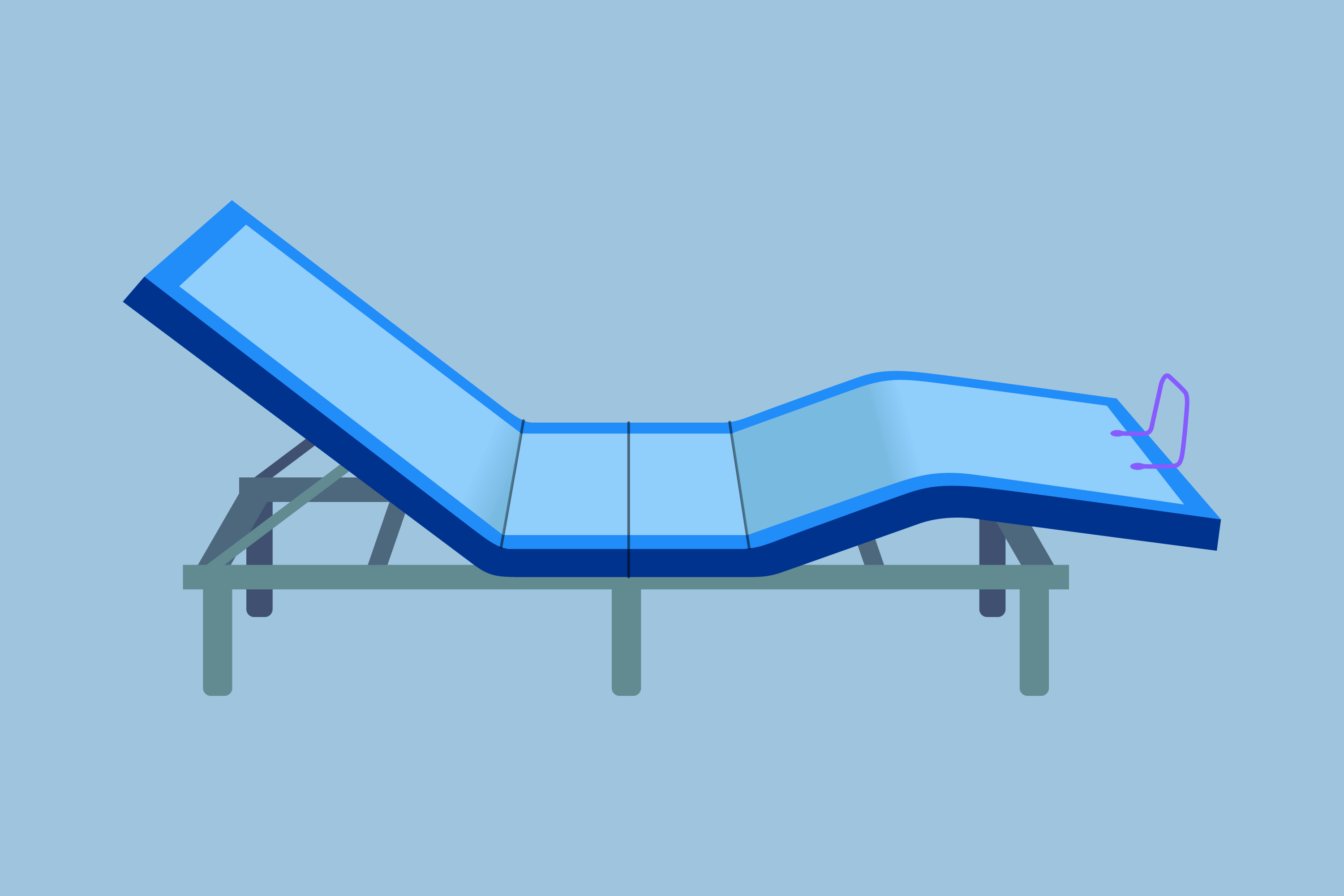Parents with a kid on the autistic spectrum already have a lot on their plates, and the bedtime routine is yet another complication.
Many autistic children have difficulty falling asleep and staying asleep to make matters much more complex. They may misbehave and demand additional attention from their parents. It is not uncommon for children to take longer than usual to fall asleep, and bedwetting may be a regular occurrence after sleeping.
Given the difficulties young children already endure, how much sleep they get is crucial to overall wellness.
A proper bedtime routine for autistic children will improve their academic performance, support motor skills development, and assist children in retaining a positive outlook.
This piece will provide our best sleep advice for reliably falling asleep for autistic children.
What is Autism?
Autism is relatively common in youth, with one in every 59 children diagnosed. But what exactly is autism?
Autism is classified Verified Source National Library of Medicine (NIH) World’s largest medical library, making biomedical data and information more accessible. View source as a neurological condition, which means that it affects the nervous system. Because the neurological system regulates every bodily function, autism can manifest itself in several ways, some disrupting sleep. Yet, there are typically similarities to other disorders.The most common symptoms of autism Verified Source National Library of Medicine (NIH) World’s largest medical library, making biomedical data and information more accessible. View source include trouble speaking, poor social and motor skills, compulsive tendencies, restrictive and repetitive habits, and sensory and gastrointestinal sensitivities.
Finally, people with autism tend to have variances in the body’s circadian rhythms, many of which can disrupt a solid night’s rest.
The term “Autism Spectrum Disorder” refers to the fact that this condition exists on a spectrum. Some children and adults have a “mild” case and are on one end of the spectrum, whereas severe instances are on the other.
Challenges Autistic Children Face When Falling Asleep
If you know that your child with autism has sleep issues, you are also aware that your child’s problems cause you to have difficulty sleeping. However, you may not realize the frequent sleep difficulties experienced by families affected by ASD.
In a 1999 survey Verified Source National Library of Medicine (NIH) World’s largest medical library, making biomedical data and information more accessible. View source still cited by Living Autism, psychologist Amanda Richdale and other sleep researchers estimated that 44-83% of autistic children suffered from poor sleep, the most prevalent of which are difficulties falling asleep, maintaining a restful night’s sleep, and early morning awakening.
Other challenges include:
- Insomnia
- Daytime sleepiness
- Pediatric obstructive sleep apnea and other sleep-disordered breathing patterns
- Bedtime aversion
- Parasomnias such as sleepwalking, restless leg syndrome, nightmares, and night terrors
- Other diagnosed sleep problems
The good news is that your difficulties in helping an autistic child fall asleep are not unique to your household. Indeed, the frequency of sleep disorders in children with autism means that specially trained sleep educators have had an excellent chance to explore the roots of sleep trouble and create effective treatments in your child’s behavior to improve sleep and help their parents improve sleep habits to benefit the entire family.
Other Sleep Issues for Children with ASD
Autism sleep issues are frequently mentioned by parents attempting to manage their children’s disease. They understand that a youngster requires proper sleep to perform optimally. That is a natural aspect of the human experience.
However, autistic children’s actions are the same things that keep them up at night. Some children with autism may have a co-morbid condition like OCD affecting sleep, too.
Among these behaviors are:
- Attention deficit hyperactivity disorder
- Compulsions
- Inattention
- Obsessive rituals and repetitive behaviors
- Physical aggression
Sleep deprivation may bring out the worst in adults. The same holds for autistic children. It’s almost like a never-ending cycle. These youngsters are already dealing with daily obstacles due to their autism which is made worse by not getting a decent night’s sleep.
Worse, not getting enough sleep exacerbates the habits that keep others in the house from sleeping well. The cycle continues, and parents worldwide are scrambling to find solutions to help their children receive the uninterrupted sleep they require.
Getting Enough Sleep with Autism
It is essential to go to sleep, stay asleep, and obtain good-quality sleep for anyone. All children, especially autistic children, require adequate rest for proper growth, development, and learning.
The length of time it takes children to fall asleep and return to sleep when they wake up throughout the night can be affected by factors such as:
- Bedtime routine before going to sleep
- The time they go to bed
- What they require to sleep
- Where do they sleep
- What they do during the day
Possible Causes of Sleep Difficulties in ASD Children
Researchers are divided on why sleep problems are so common in autistic youngsters. However, some hypotheses are circulating in the autism research community that has the potential to lead to improved therapies or treatments for better bedtime routines.
Missed Signals and Cues
Typical sleep connections to promote sleep may be harder to acquire for children with ASD (such as a regular bedtime routine to help children fall asleep faster).
Adapting to New Circumstances
Children with autism typically struggle to adjust to changes in routine or surroundings. Trips to Grandma’s or family vacations might disrupt their sleep-wake schedule leading to poor quality sleep. Another issue is adjusting to Daylight Saving Time and then returning to Standard Time.
Circadian Rhythm Sleep Disturbances
Children with ASD may not respond to social signals that help typically developing children and adults control their circadian cycles, such as mealtimes, bath times, dressing for bed, brushing their teeth, and so on.
According to a study Verified Source National Library of Medicine (NIH) World’s largest medical library, making biomedical data and information more accessible. View source undertaken by a team of experts in Japan, persons with autism are nearly twice more likely to inherit abnormalities in the genes that govern the body’s sleep/wake cycle or circadian rhythms, which might explain why so many children with ASD have sleeping issues.Anxiety is a typical issue for children with autism, and it can contribute to sleeplessness and other sleep problems.
Medical problems. Apnea, seizures, and acid reflux are more frequent in ASD children and can interfere with sleep. Prescribed epilepsy drugs can help with reducing seizures while sleeping.
Melatonin levels are lower. Melatonin, a neurohormone that governs the sleep/wake cycle, is lower in autistic children. In a Vanderbilt University research study, children on the autistic spectrum with lower melatonin levels spent less time in deep sleep and reported higher daytime tiredness.
16 Strategies to Help Your Autistic Child Sleep Better
These bedtime routines aren’t always 100% successful. However, they can assist in alleviating your overnight as well as early morning troubles with better sleep hygiene.
The suggestions below can help all children sleep better, especially autistic children. They assist youngsters in developing an appropriate daytime and nighttime bedtime routine.
Reduce Household Noises
 Many typically developing children can readily shut out ambient sounds, particularly when sleepy. Household sounds such as TV, music, and the dishwasher can be overstimulating or otherwise unsettling for children on the autism spectrum, affecting sleep latency and making it hard for them to go to sleep or even get tired.
Many typically developing children can readily shut out ambient sounds, particularly when sleepy. Household sounds such as TV, music, and the dishwasher can be overstimulating or otherwise unsettling for children on the autism spectrum, affecting sleep latency and making it hard for them to go to sleep or even get tired.
Try to restrict your child’s exposure to loud or soft household noises after going to bed as much as possible.
Reduce Light in the Bedroom
 Visual stimulation might irritate your youngster, making it harder for them to fall asleep. Maintaining bedroom darkness will reduce visual stimulation and stimulate the production of melatonin, which is a neurohormone promoting sleep.
Visual stimulation might irritate your youngster, making it harder for them to fall asleep. Maintaining bedroom darkness will reduce visual stimulation and stimulate the production of melatonin, which is a neurohormone promoting sleep.
Use black-out curtains to protect from streetlights, traffic lights, or other exterior light sources entering your child’s bedroom windows. This can also apply to light exposure before bed, particularly blue light from screens.
Maintain a Cool Bedroom Temperature
 Your little one may be unable to sleep if they are too cold or hot, but sleep experts agree that a cooler bedroom encourages restful sleep. Bedroom temps should be between 65° and 67° F.
Your little one may be unable to sleep if they are too cold or hot, but sleep experts agree that a cooler bedroom encourages restful sleep. Bedroom temps should be between 65° and 67° F.
However, if your youngster cannot tolerate certain clothes or blankets, adjust the temperature slightly but no more than 75° F.
Check the Materials in Pajamas and Bedding
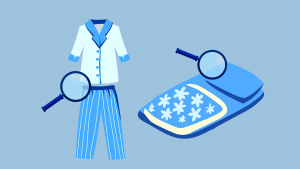 Certain textiles and garment elements are particularly aggravating to many children with autism. Ensure that your child’s pajamas and linens are composed of neither uncomfortable nor annoying fabrics for the youngster.
Certain textiles and garment elements are particularly aggravating to many children with autism. Ensure that your child’s pajamas and linens are composed of neither uncomfortable nor annoying fabrics for the youngster.
Be mindful that zippers, seams, and buttons can also irritate. If your child is nonverbal, you may have to conduct some trial-and-error research with them.
Create a Sleep Routine with Visual Clues
 Create a peaceful sleep ritual with your child that you can follow every night. Maintain a basic, relaxed environment free of electronic screens.
Create a peaceful sleep ritual with your child that you can follow every night. Maintain a basic, relaxed environment free of electronic screens.
Make a visual aid for your child’s sleep routine. Use visual cues as a nightly ritual, such as pointing out a sleeping moon wearing a sleep mask, and snoring as part of the child’s bedtime routine. (See The National Autistic Society for further information and examples of visual tools for autistic children.)
A typical nighttime ritual may be as follows:
- Have a daily chore board indicating when to get ready for bed.
- Have a bath.
- Put on jammies.
- Use the restroom
- Hands should be washed.
- Brush teeth
- Read a book
- Finally, go to bed
Tell a Bedtime Story
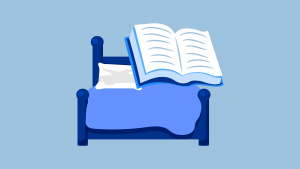 Bedtime stories are often a big part of a developing child’s bedtime routine, and a child with autism is no exception. Try coming up with a bedtime story on the value of sleep and the clues individuals use to recognize when it’s time to sleep. Include images to help support your tale and give your child a model to emulate.
Bedtime stories are often a big part of a developing child’s bedtime routine, and a child with autism is no exception. Try coming up with a bedtime story on the value of sleep and the clues individuals use to recognize when it’s time to sleep. Include images to help support your tale and give your child a model to emulate.
An older child may also be able to pick out a storybook that can help them relax before bedtime.
Consider a Weighted Blanket
 Recent research found that weighted blankets don’t enhance sleep time or decrease the time spent falling asleep. However, the deep pressure produced by the weighted blanket will often aid in comforting your child and help make bedtime more enjoyable.
Recent research found that weighted blankets don’t enhance sleep time or decrease the time spent falling asleep. However, the deep pressure produced by the weighted blanket will often aid in comforting your child and help make bedtime more enjoyable.
We suggest looking for a weighted blanket specifically for children, as an adult size weighted blanket can be too large and heavy for a young child. A too-heavy design can negate the potential benefits of a weighted blanket.
Practice Relaxing Techniques
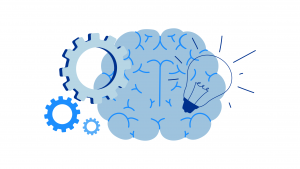 Anxiety and stress related to bedtime aren’t uncommon in growing children, from fears of the dark or nightmares to separation anxiety.
Anxiety and stress related to bedtime aren’t uncommon in growing children, from fears of the dark or nightmares to separation anxiety.
If you feel your child’s sleep problems are caused by worry, integrate some relaxation exercises into the nightly routine. These are some examples:
- Deep inhalation
- Muscle relaxation methods
- A hot bath
- Gentle music
- Stories or audiobooks
Older children may want to try journaling before bed and writing down their fears and concerns, much like the way an adult might manage their worries.
Think about Melatonin Treatment
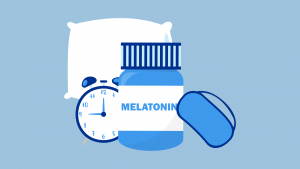 According to research, children with autism improve their sleep when melatonin is used with sleep education for parents on sleep promotion measures.
According to research, children with autism improve their sleep when melatonin is used with sleep education for parents on sleep promotion measures.
For example, a new melatonin pill called PedPRM has been released in Europe and is expected in the USA soon. It is a slow-release medication that is simple for children to use and has been demonstrated to reduce the time children spend falling asleep while increasing overall sleep time.
Teach Your Child to Sleep by Themselves
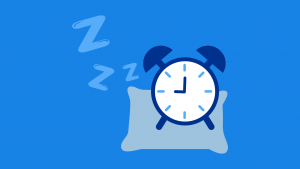 Often parents of autistic children have to co-sleep with their child in order to put them to sleep. They may see it as a beautiful opportunity to bond with their child. It promotes their imagined desire to have their child close by to fall asleep.
Often parents of autistic children have to co-sleep with their child in order to put them to sleep. They may see it as a beautiful opportunity to bond with their child. It promotes their imagined desire to have their child close by to fall asleep.
However, that can be unhealthy for both of you. Instead, following our tips may help for a more restful night for all involved.
Creating a Comfortable Sleep Environment
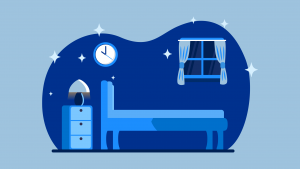 Surround them with things they enjoy. A comfortable blanket, a cherished stuffed animal, and a nightlight can all assist an autistic youngster in falling asleep and staying asleep all night. A white noise machine and cozy pajamas may also be beneficial in a sleep environment.
Surround them with things they enjoy. A comfortable blanket, a cherished stuffed animal, and a nightlight can all assist an autistic youngster in falling asleep and staying asleep all night. A white noise machine and cozy pajamas may also be beneficial in a sleep environment.
We have a number of tips on setting up a sleep-inducing bedroom:
- Best and Worst Bedroom Colors for Sleep
- How a Tech-Free Bedroom Creates Smarter Sleep
- Creating a Calm, Clutter-Free Bedroom
Comfortable Bedding
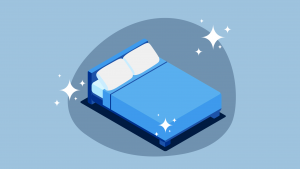 A good mattress may make all the difference. If your child is sleeping on a hand-me-down that is several years old, it’s time to update. The same may be said about bedding and pillows.
A good mattress may make all the difference. If your child is sleeping on a hand-me-down that is several years old, it’s time to update. The same may be said about bedding and pillows.
Look for cooling and hypoallergenic sheets made of natural fabrics such as cotton, eucalyptus, or bamboo. Your child’s pillow should be carefully chosen as well. It should be of medium suppleness, neither too soft nor hard.
Dim Nightlights
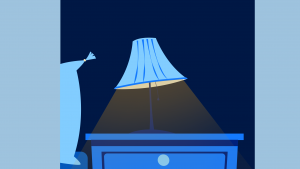 A young person’s fear of the dark is not uncommon, and a nightlight can assist. We recommend looking for one with a soft glow. A too-bright light may keep your toddler or school-age child awake.
A young person’s fear of the dark is not uncommon, and a nightlight can assist. We recommend looking for one with a soft glow. A too-bright light may keep your toddler or school-age child awake.
However, while dim lighting is good, you’ll likely want to avoid lights that flicker. Some sensitive children may find this distracting.
Some White Noise
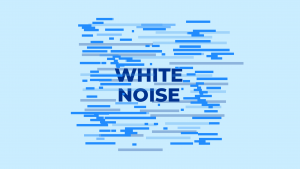 These sounds are popular among adults who suffer from sleeplessness and can help children. A white noise machine blends all sound frequencies into a relaxing hum that filters out outside disturbances. White noise devices with peaceful natural soundscapes, tranquil music, or guided meditations are also available. Even sleeping with a fan on can create pleasant white noise.
These sounds are popular among adults who suffer from sleeplessness and can help children. A white noise machine blends all sound frequencies into a relaxing hum that filters out outside disturbances. White noise devices with peaceful natural soundscapes, tranquil music, or guided meditations are also available. Even sleeping with a fan on can create pleasant white noise.
Clothing Temperature at Bedtime
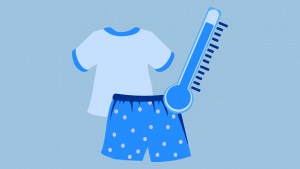 To identify the ideal answer, parents will need to conduct some research. The first step is to ensure that all pajamas fit correctly and are comfy. Check whether your child is removing their garments in the middle of the night, which signifies that they are overheating and require something cooler.
To identify the ideal answer, parents will need to conduct some research. The first step is to ensure that all pajamas fit correctly and are comfy. Check whether your child is removing their garments in the middle of the night, which signifies that they are overheating and require something cooler.
If necessary, take steps to cool down the bedroom.
See a Sleep Specialist
 A sleep specialist can be helpful if your child snores and experiences other symptoms of sleep-related disorders. They can help you construct a treatment plan that goes beyond improving basic sleep hygiene.
A sleep specialist can be helpful if your child snores and experiences other symptoms of sleep-related disorders. They can help you construct a treatment plan that goes beyond improving basic sleep hygiene.
Visiting a specialist or undergoing a sleep study can significantly benefit an autistic child. Keeping sleep diaries and noting behavior can help determine some problems.
Some sleep studies are at-home sleep studies, while others take place in a laboratory setting to take advantage of extra technology. Using a sleep lab at night to monitor behavior when falling asleep can help a specialist determine a course of action and introduce sleep education tailored to your child’s needs.
These sleep studies may be able to help diagnose conditions like pediatric sleep apnea, which can spur treatment measures like CPAP therapy or surgery for sleep apnea, depending on the root cause. For example, it’s common for children with large tonsils to have pediatric OSA, and removing the tonsils can ease symptoms greatly.
Reaching out for help from a sleep specialist may be beneficial. However, ensure they are experienced with autistic children. The primary thing for parents to focus on is establishing a good sleep schedule and bedtime routine and ensuring the child gets to bed on time.
Overtired kids, regardless of neurotypical status, ideally need 10.5-12 hours of sleep overnight. And, especially if your child is waking multiple times a night, they will need a bedtime that is adequately earlier. Bedtime calculators can help sleepers determine if they’re falling asleep at the right time.
See our guide to how much sleep kids need.
Tips for Children Struggling with Sleep & Self-Soothing
 Everyone wakes up numerous times during the night. Most individuals ignore these wakings since they return to sleep immediately.
Everyone wakes up numerous times during the night. Most individuals ignore these wakings since they return to sleep immediately.
Natural waking can disrupt the night’s sleep of youngsters unable to return to sleep on their own. That is why your child must learn to sleep alone at bedtime and at night.
Teaching your youngster to fall asleep on their own should be done little by little over several weeks. Once your child has gone to bed, separate yourself progressively from them and make short visits to their room. Reduce the amount of attention you provide your child, such as eye contact, talking, facial emotions, and so on, while increasing the distance from them.
If you must return to their room when they haven’t fallen asleep, wait a bit longer every time and keep your checkups quick and unobtrusive. This strategy may also be used for waking up in the middle of the night.
FAQs
How can they be convinced to sleep in their own bed?
An autistic child frequently wants to be in the bedroom with one or both parents. Unfortunately, this sets a precedent and makes deep sleep difficult for mom and dad. It may preclude the possibility of romance.
Many parents have found success with the following three tips:
- Create a reward system: You might need to reward your child to resist the impulse to climb into bed with you. Tell them they will be rewarded if they demonstrate independence by sleeping in bed. A new coloring book, more one-on-one time with mom, or even a trip to the park or beach are all possibilities.
- Create a safety net: This suggestion is strongly related to the reward system. An autistic kid may sometimes require the presence of their parents. You may offer them some “free passes” to utilize when they genuinely need to be close.
- The chair vanishes: Instead of having your child sleep in your bed, have them sleep in their bed with a chair nearby. Sit with them until they fall asleep or you feel safe leaving (this time should be no more than 20 minutes). Every night, gently bring the chair closer to the door until you reach it. The final stage is to leave the room but with a promise to check in on them after a certain period.
Are there any sleep drugs available for children?
There are prescription drugs available, though medication is not the only path to consider when you’re trying to help your child sleep better at night. Consult with a reputable physician or sleep specialist before starting medication for an autistic kid. A doctor may also recommend lifestyle changes for the child in addition to a prescription.
Is melatonin safe for autistic children?
Melatonin is a naturally occurring hormone that aids in regulating the sleep-wake cycle. Many people take melatonin pills to help them sleep better. One of the most challenging aspects of melatonin is that it moves fast through the body, so although it may help someone go asleep, they may not necessarily stay asleep.
Research has looked into the usage of melatonin in children with autism. One double-blind trial Verified Source National Library of Medicine (NIH) World’s largest medical library, making biomedical data and information more accessible. View source including 125 autistic youngsters looked into using a slow-release formulation. The children in the melatonin supplement group slept over an hour longer. They fell asleep 40 minutes sooner than the children in the placebo group.
Conclusion
It doesn’t matter if a child has autism or not; getting them to sleep at night is a struggle that might endure for several years regardless of their condition. A kid with autism may or may not react positively to behavioral training and changes, unlike most children who respond positively to such interventions.
We have included this list of recommendations in the hopes that you may find one or a combination of many to help address your challenges.
About the author
Eric Ridenour is a health and wellness writer with a strong focus on sleep and nutrition. With a background in health science and psychology, Eric has a deep understanding of the connection between sleep and overall well-being. His expertise has been sought by various businesses and individuals, and his work has been featured in reputable publications such as Thrive Global, Drug Report, and Authority Magazine. Eric's commitment to promoting better sleep and comprehensive wellness is evident in his writing and consultations. He is a published author working on his second book.
View all posts